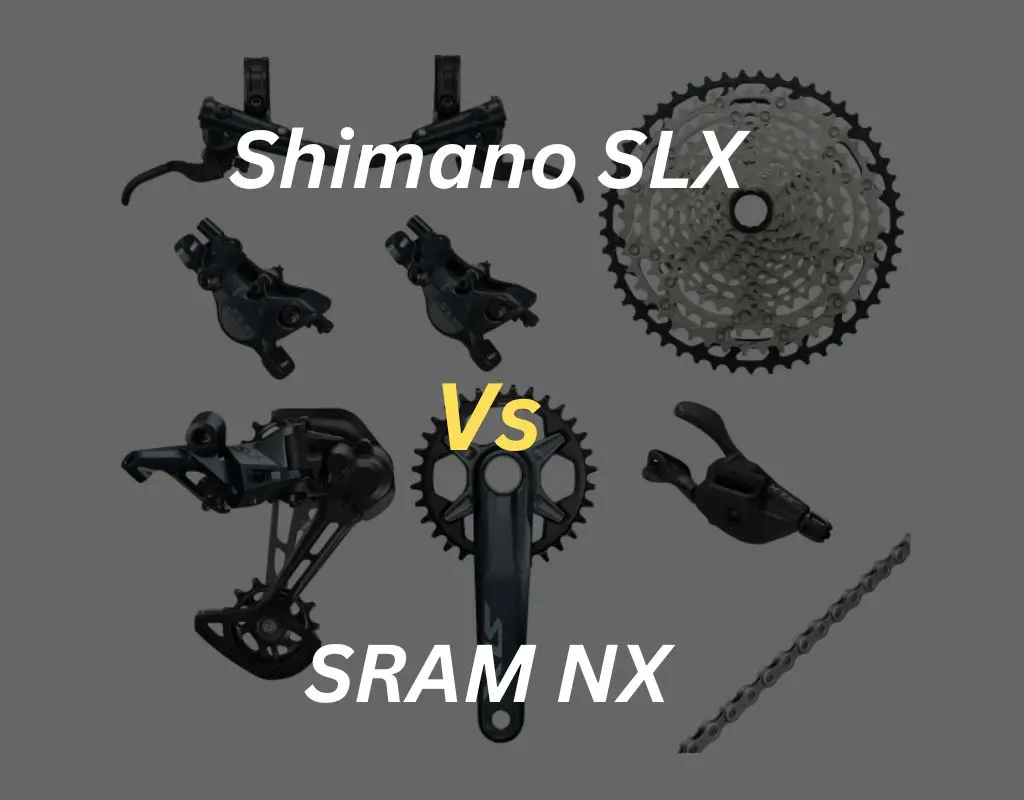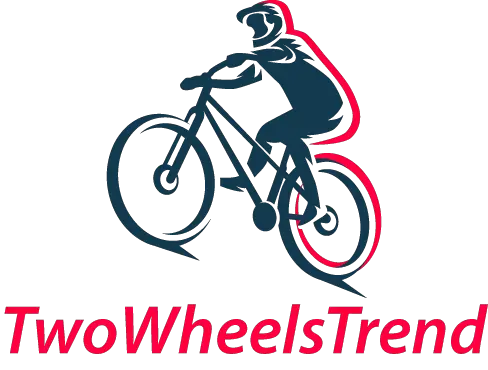
Shimano SLX and SRAM SX are mid-range options that offer reliable performance and durability, but they have some differences that might affect your riding experience.
We will compare them in terms of features, compatibility, weight, price, and user reviews, and help you decide which one suits your needs and preferences better.
Features
Shimano SLX and SRAM SX are both 12-speed groupsets that use a 1x drivetrain system, meaning they have a single chainring in the front and a wide-range cassette in the rear. This simplifies shifting and reduces weight and maintenance, while still providing enough gear range for various terrains.
Shimano SLX
Shimano SLX uses a Hyperglide+ technology that allows smooth and fast shifting in both directions, even under load. The chain has a special design that reduces noise and friction, and the cassette has a Micro Spline interface that is compatible with Shimano’s 10-51T or 10-45T options.
Shimano SLX uses hydraulic disc brakes with Servo Wave levers that provide more power and modulation. The brake calipers have four pistons that offer better heat dissipation and control.
SRAM SX
SRAM SX, on the other hand, uses an X-Glide 2 technology that promises smooth and precise shifting, but only in one direction (upshifts). The chain has a Flattop design that increases strength and durability, and the cassette has a XD driver interface that is compatible with SRAM’s 11-50T or 11-52T options.
SRAM SX uses hydraulic disc brakes with Direct Link levers that provide a solid and positive feel. The brake calipers have two pistons that offer sufficient stopping power and reliability.
Related: Can You Mix SRAM and Shimano?
Compatibility
Another factor to consider when choosing between Shimano SLX and SRAM SX is compatibility. Both groupsets are designed to work with their own components, but they might also be compatible with some other brands or models, depending on the configuration.
Shimano SLX
It is compatible with other Shimano 12-speed groupsets, such as Deore XT or XTR, as well as some 11-speed models, such as Deore M5100 or M4100. However, it is not compatible with SRAM 12-speed groupsets, such as NX or GX, or any other brand that uses a different freehub interface or chain design.
SRAM SX
This groupset is compatible with other SRAM 12-speed groupsets, such as NX or GX, as well as some 11-speed models, such as NX PG-1130 or GX PG-1130.
It is not compatible with Shimano 12-speed groupsets like SLX or XT, or any other brand that utilizes a different freehub interface or chain design.
Therefore, if you want to mix and match components from different brands or models, you need to check the compatibility carefully before buying. Otherwise, you might end up with incompatible parts that won’t work together properly.
Related: Shimano Deore RD-M591 vs. M592: Compared
Weight
Both groupsets are relatively lightweight for their price range, but there are some differences in the individual components.
The weight of the Shimano SLX groupset (without rotors) is 1,833g, while the weight of the SRAM SX groupset (without rotors) is 2,007g. That means Shimano SLX is about 174g lighter than SRAM SX.
The main difference comes from the cassette and the crankset.
The Shimano SLX cassette weighs 534g (10-51T) or 513g (10-45T), while the SRAM SX cassette weighs 615g (11-50T) or 621g (11-52T). The Shimano SLX crankset weighs 631g (32T), whereas the SRAM SX crankset weighs 753g (32T).
The other components have almost similar weights
Rear Derailleur:
- Shimano SLX: 322g
- SRAM SX: 339g
Shifter:
- Shimano SLX: 122g
- SRAM SX: 120g
Brakes (Front):
- Shimano SLX: 224g
- SRAM SX: 240g
Brakes (Rear):
- Shimano SLX: 235g
- SRAM SX: 250g
Related: Can you Mix Shimano Groupsets?
Price
The price of the Shimano SLX groupset (without rotors) is $599.99, while the price of the SRAM SX groupset (without rotors) is $374.99. That means Shimano SLX is about $225 more expensive than SRAM SX.
The main difference comes from the cassette and the crankset.
The Shimano SLX cassette costs $109.99 (10-51T) or $99.99 (10-45T), while the SRAM SX cassette costs $74.99 (11-50T) or $79.99 (11-52T). The Shimano SLX crankset costs $149.99 (32T), while the SRAM SX crankset costs $104.99 (32T).
If you are looking for a cheaper groupset, SRAM SX might be a better option than Shimano SLX. However, the price difference might reflect the quality and performance of the components, and you might get what you pay for.
Pros and Cons: Shimano SLX vs. SRAM SX
Some of the pros and cons of Shimano SLX and SRAM SX are:
Pros: Shimano SLX
- Smooth and fast shifting
- Quiet and durable chain
- Powerful and modulated brakes
- Lightweight and reliable components
- Compatible with other Shimano models
Cons: Shimano SLX
- Expensive compared to SRAM SX
- Limited cassette options
- Requires a specific freehub interface
- Hard to find spare parts
Pros: SRAM SX
- Cheap compared to Shimano SLX
- Wide-range cassette options
- Compatible with other SRAM models
- Easy to install and adjust
Cons: SRAM SX
- Rough and noisy shifting
- Prone to chain drops and skips
- Weak and spongy brakes
- Heavy and cheap-looking components
- Requires a specific freehub interface
Related: Is Shimano Ultegra Good?
Conclusion
Both Shimano SLX and SRAM SX are good options for mountain biking, but they have different strengths and weaknesses that might suit different riders better.
Shimano SLX is a smoother, quieter, lighter, and more powerful groupset, but it is also more expensive, limited, and hard to find.
SRAM SX is a cheaper, wider-range, easier, and more compatible groupset, but it is also rougher, noisier, heavier, and weaker.
